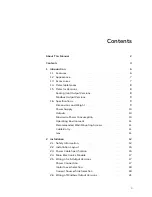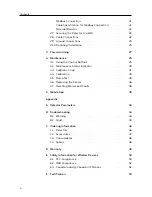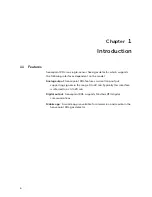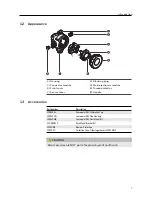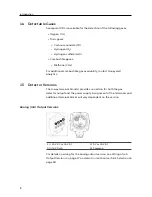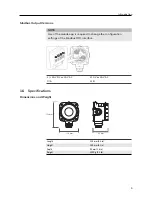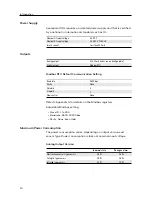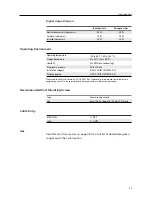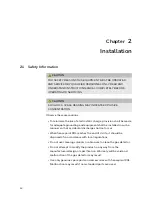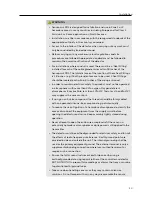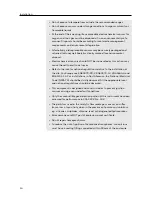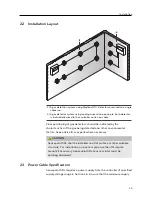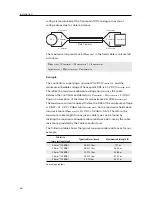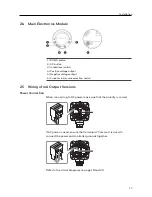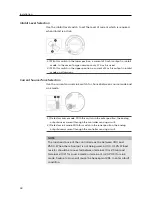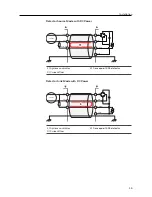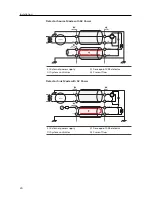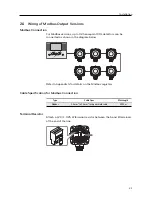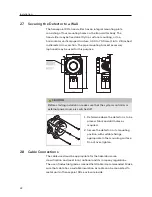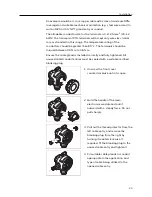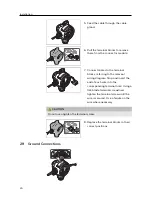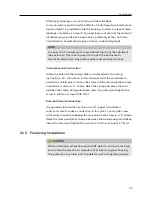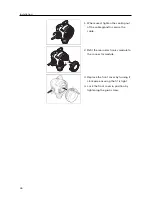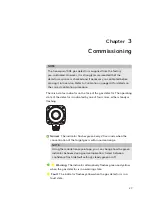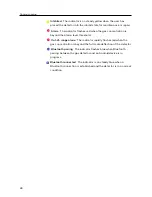
Installation
WARNING
• Sensepoint XRL is designed for installation and use in Zone 1 or 2
hazardous areas in many countries including Europe and for Class 1
Division 1 or 2 area applications in North America.
• Installation must be in accordance with the recognized standards of the
appropriate authority in the country concerned.
• Access to the interior of the detector, when carrying out any work, must
only be conducted by trained personnel.
• Before carrying out any work ensure local regulations and site
procedures are followed. Appropriate standards must be followed to
maintain the overall certification of the detector.
• For installations where conduit is used, there must be a “Seal Fitting”
installed for each of the cable gland entries within 18 inches of the
Sensepoint XRL. The total distance of the location of these Seal Fittings
is 18 inches. (e.g. If both gland entries are to be used, 2 Seal Fittings
should be located, each within 6 inches of the wiring entrance).
• In order to maintain electrical safety, the product must not be operated
in atmospheres with more than 21% oxygen. Oxygen deficient
atmospheres (Combustible: less than 10%V/V, Toxic: less than 6%V/V)
may suppress the sensor output.
• If using an anti-seize compound, the threads should be thinly coated
with an approved silicone-free compound e.g. petroleum jelly
• To reduce the risk of ignition of a hazardous atmosphere, de-classify the
area or disconnect the equipment from the supply circuit before
opening the detector enclosure. Keep assembly tightly closed during
operation.
• Never attempt to open the enclosure or replace/refit the sensor in
potentially hazardous atmospheres or while power is still applied to the
transmitter.
• The detector must be earthed/grounded for electrical safety and to limit
the effects of radio frequency interference. Earth/ground points are
provided inside and outside the unit. The internal grounding shall be
used as the primary equipment ground. The external terminal is only a
supplemental bonding connection where local authorities permit or
require such a connection.
• Ensure that all screens/instrument earth/clean earth wiring is
earthed/grounded at a single point (either at the controller or detector,
BUT NOT BOTH) to prevent false readings or alarms that may occur due
to potential earth/ground loops.
• Take care when handling sensors as they may contain corrosive
solutions. Do not tamper with or in any way disassemble the sensor.
13



